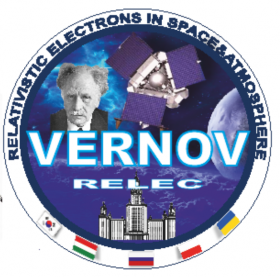At the session of the RAS Council for space it was resolved to name the spacecraft "MKA-FKI(PN2)" after the oustanding Soviet scientist Segey Vernov.
Sergey Vernov (June 28 (July 11), 1910, Sestroretsk - September 26, Moscow) is a Soviet physicist, the Academician of the USSR Academy of Sciences, an outstanding expert in the field of cosmic rays. He was one of the scientists who discovered the Earth's radiation belts. On graduating from Leningrad Polytechnical University (1931) he worked for the Radium Institute and the Physical Insitute of the USSR Academy of Sciences. In 1944 he was appointed to a professorship at Moscow State University, in 1946 became a Deputy Director and in 1960 - Director of SINP MSU. His basic studies concerned the nature and properties of cosmic rays in the upper atmosphere and outside it. Sergey Vernov got a title of Hero of socialist labour, Laureate of the Stalin and the Lenin Prizes.
Looking back, the spacecraft "MKA-FKI(PN2)" was launched to the orbit on July 8, 2014 from the Baikonur launching site. A complex of scientific equipment RELEC (Relativistic ELECtrons) is intended for the studies of mechanisms of precipitation and acceleration of magnetospheric relativistic electrons, their influence on the upper atmosphere and ionosphere of the Earth, atmospheric transient phenomena within the whole electromagnetic spectrum and search for the possible links between high-energy electrons' precipitation and high-altitude electric discharges, which apparently produce atmospheric transient phenomena.
This research is important not only for the fundamental science, but also for the applied studies. High-energy charged particles fluxes produced by the solar flares or during the magnetic storms can cause damage and breakdown of radioelectronic devices onboard spacecrafts; they are also dangerous for the cosmonauts' health and sometimes even for the crews and passangers of the aircrafts during the transpolar flights. Besides, the fluxes of high-energy charged particles can cause short-wave blackouts at high latitudes and navigation blackouts, diminishing the accuracy of the global navigation and positioning systems.
The spacecraft was developed and manufactured on the base of unified platform "Karat" at S.A.Lavochkin Scientific and Production Association. Scientific equipment was developed and produced by SINP scientists in cooperation with Russian (Space Researh Institute of RAS and Scientific and Research Laboratory for Aerospace Engineering) and foreign partners (Lviv Branch of the Space Research Institute of the National Academ of Sciences and the National Space Agency of Ukraine; L.Etvesh University, Hungary; The Center for Space Research of the Polish Academy of Sciences; Songugkwan University, Korea).
The first scientific results obtained by RELEC instrument were also discussed at the Session of the RAS Council for space. Among them, in particular, are several hundred of UV radiation bursts, which prove the conclusion that such events are observed as series of the bursts along the magnetic meridian, obtained by the satellite "Universitetsky-Tatiana-2"; numerous precipitations of high-energy electrons, including variations of the fluxes of the captured and precipitating electrons due to electromagnetic activity; several events considered as candidates for atmospheric gamma-bursts; dozens of bursts of low-frequency (whistlers) and high-frequency radio-emission caused by thunderstorms and electromagnetic disturbances in the ionosphere.

